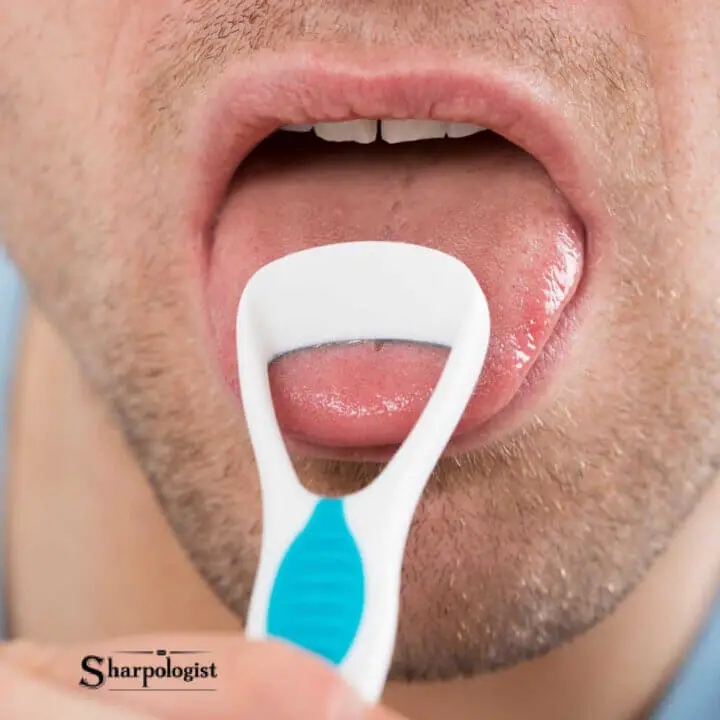
Sharpologist readers are all about traditional grooming. But an “old school” grooming tool I started using recently may not be very familiar to those living in North America–the tongue scraper.
History Of Tongue Scrapers
The practice of scraping and brushing the tongue has been around for centuries in Europe, Africa, the Middle East, India, and South America, but is relatively unknown to Western civilizations. But tongue scrapers and tongue cleaning has gained renewed attention due to recent scientific research.
The practice of traditional Indian medicine, Ayurveda, recommends tongue cleaning as part of one’s daily hygiene regimen to remove the toxic debris, known as Ama. Tongue cleaning has existed in Ayurvedic practice since ancient times, using tongue scrapers made from various materials, including wood, metals, ivory, mother-of-pearl, whalebone, celluloid, tortoiseshell, and plastic. Nowadays, plastic scrapers are used in India and the Far East.
But India isn’t the only place to have practiced tongue cleaning for centuries: people from countries in Africa, South America, Europe and many other cultures have done tongue cleaning for many generations. Each of these peoples has special traditions when it comes to tongue cleaning.
Why use A Tongue Scraper?
So why use a tongue scraper?
- Reduce bad breath and tooth decay. Although tongue scraping can’t replace brushing your teeth, scraping may do some things better. Researchers in one 2004 study found that scraping twice a day was more effective than brushing at removing odor- and tooth decay-causing bacteria, .
- Improve your sense of taste. Some research suggests that using a tongue scraper twice daily for two weeks may improve your sense of taste by being better able to distinguish between bitter, sweet, salty, and sour sensations.
- Improve the appearance of your tongue. Buildup of excess debris can cause your tongue to take on a white, coated appearance. Daily scraping can help remove this coating and prevent it from returning.
Tongue cleaners are ergonomically shaped to the anatomy of the tongue and are designed to lift and trap the plaque coating, effectively cleaning the surface of the tongue.
Toothbrushes are considered as less effective for tongue cleaning because of their smaller brush head width–plus they’re designed for the solid structure of teeth, not the spongy tissue of the tongue. This can reduce its ability to remove debris and microorganisms. Some toothbrush designs do have projections on the back of their heads that can act as a tongue cleaner though.
Traditional (And Modern!) Tongue Scrapers
There are many different types of tongue cleaners. They straps made from different materials, brush bristles that form “rakes,” or circular tools with handles. Tongue cleaners are mostly inexpensive, small, easy to clean and durable. but their effectiveness varies depending on the shape, dimensions, and quality of the materials used.
Tongue scrapers in Ayurvedic practice were traditionally developed from materials like ivory, tortoiseshell, whalebone, wood, gold, silver, brass, and tin. Today plastic scrapers are used as well.
The traditional design of a tongue scraper is in the shape of an upside-down “U.”
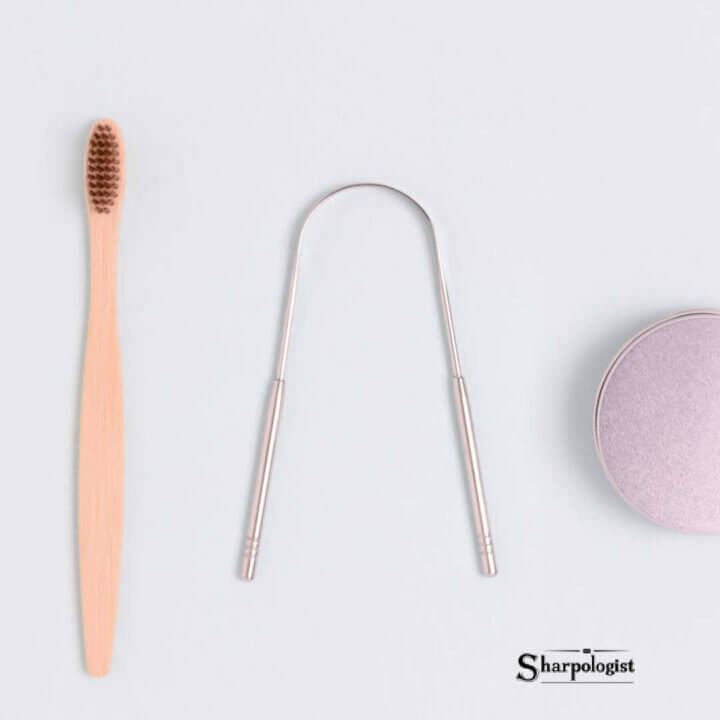
Another popular design is what I call a “delta” shape, sort of like a triangle:
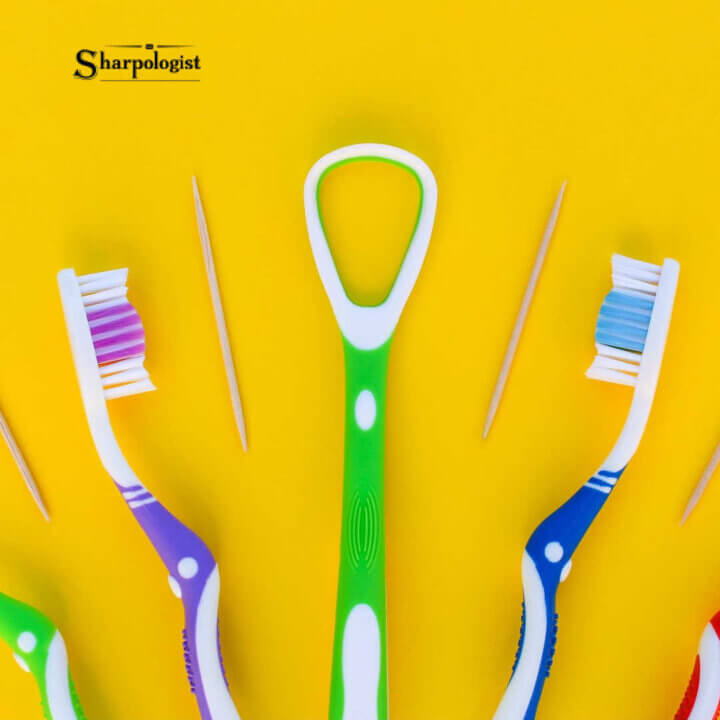
Then there are alternate designs, some of which resemble a toothbrush:
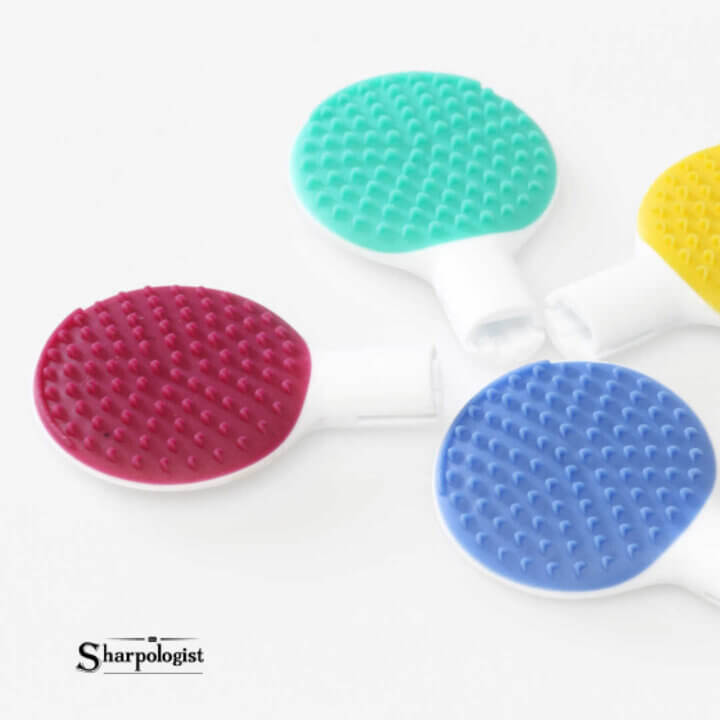
What Is The Best Tongue Scraper?
Note:Amazon links for convenience and are affiliate. Geni.us links are “localized” Amazon links. However tongue scrapers are fairly widely available from a number of sources. Use your favorite search engine to find something near you.
As I mentioned earlier, tongue scrapers come in a number of different materials, shapes, and sizes. Amazon (US) has a list of their most popular models but many are available world-wide. Amazon’s most popular tongue scraper by Mastermedi is of the traditional shape and material (this is what I have).
Another popular, often recommended tongue scraper is Dr. Tung’s Tongue Cleaner.
A more modern, more widely available (in North America) design that is also often recommended is the Orabrush Tongue Cleaner.
How To Scrape Your Tongue
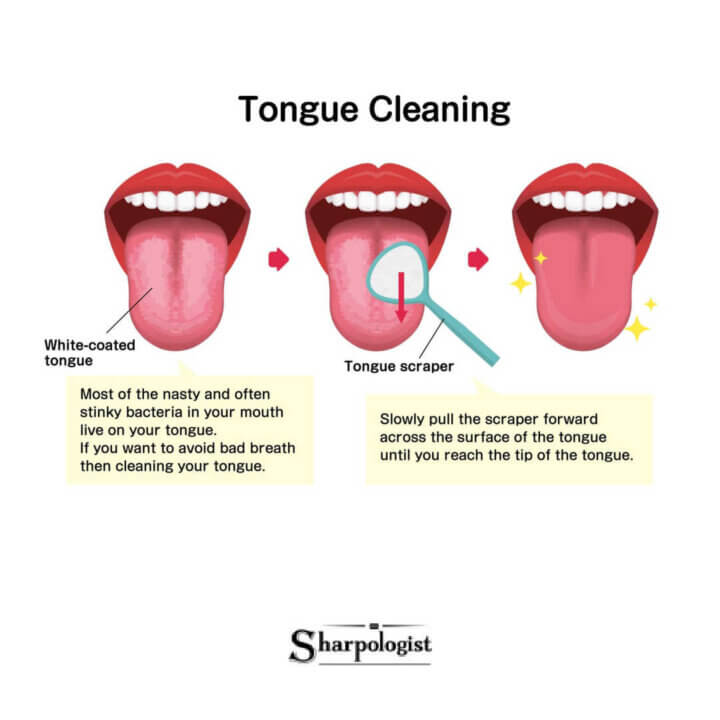
Tongue scraping is a painless and low risk procedure. The process of tongue cleaning is fairly straight-forward (and may even look a little familiar to the traditional shaving enthusiast):
- Brush and floss as you normally would. Then open your mouth wide and put the tongue scraper on the furthest reachable point on the back of the tongue (but not so far back that you gag).
- Apply gentle pressure and pull the scraper forward toward the tip of the tongue. Scraping shouldn’t hurt.
- Rinse the scraper with warm water after the first pass.
- Repeat the scraping process as necessary.
- Rinse the mouth with water (but don’t swallow, spit it out).
- Wash the tongue scraper thoroughly with warm water and soap. Store the tongue scraper in a clean, dry place between uses.
Most experts recommend using a tongue scraper twice daily.
If tongue scraping causes pain or bleeding, you should stop using the scraper: you might be using it with too much force, or there may be uneven edges on the scraper that could be injuring the tongue.
If you use a tongue scraper and notice that your tongue feels sore or painful, talk to your dentist. A dentist can help them determine whether you have an underlying condition that may cause bad breath or give the tongue an abnormal appearance.
Conclusion
I’ve been using a tongue scraper for a little while now and it seems to be beginning to make a difference for me: my mouth “feels” better and my notoriously poor sense of taste seems to have improved somewhat. So it may be worth adding a tongue scraper to your “traditional” grooming routine.

I find the best tongue scraper is one’s favorite manual toothbrush and toothpaste. A little diluted hydrogen peroxide also can be used as an occasional alternative. Brush forward from the rear of the tongue.
The specialized tools for scraping the tongue are unnecessary, maybe gimmicky, and more expensive (though certainly better than nothing).
Cleaning the tongue is highly important, though sadly neglected. The teeth, gums, and the tongue together require daily and frequent attention.
Definitely not gimmicky, my friend. If you try (if haven’t) you will know. I have tried your method and it’s definitely not the same for me, but better than not cleaning. I like this plastic one. It’s wider than others which feels better
I’ve been using them for years, plastic ones in my case. They really make a big difference in how the mouth feels, I highly recommend them.
Comments are closed.